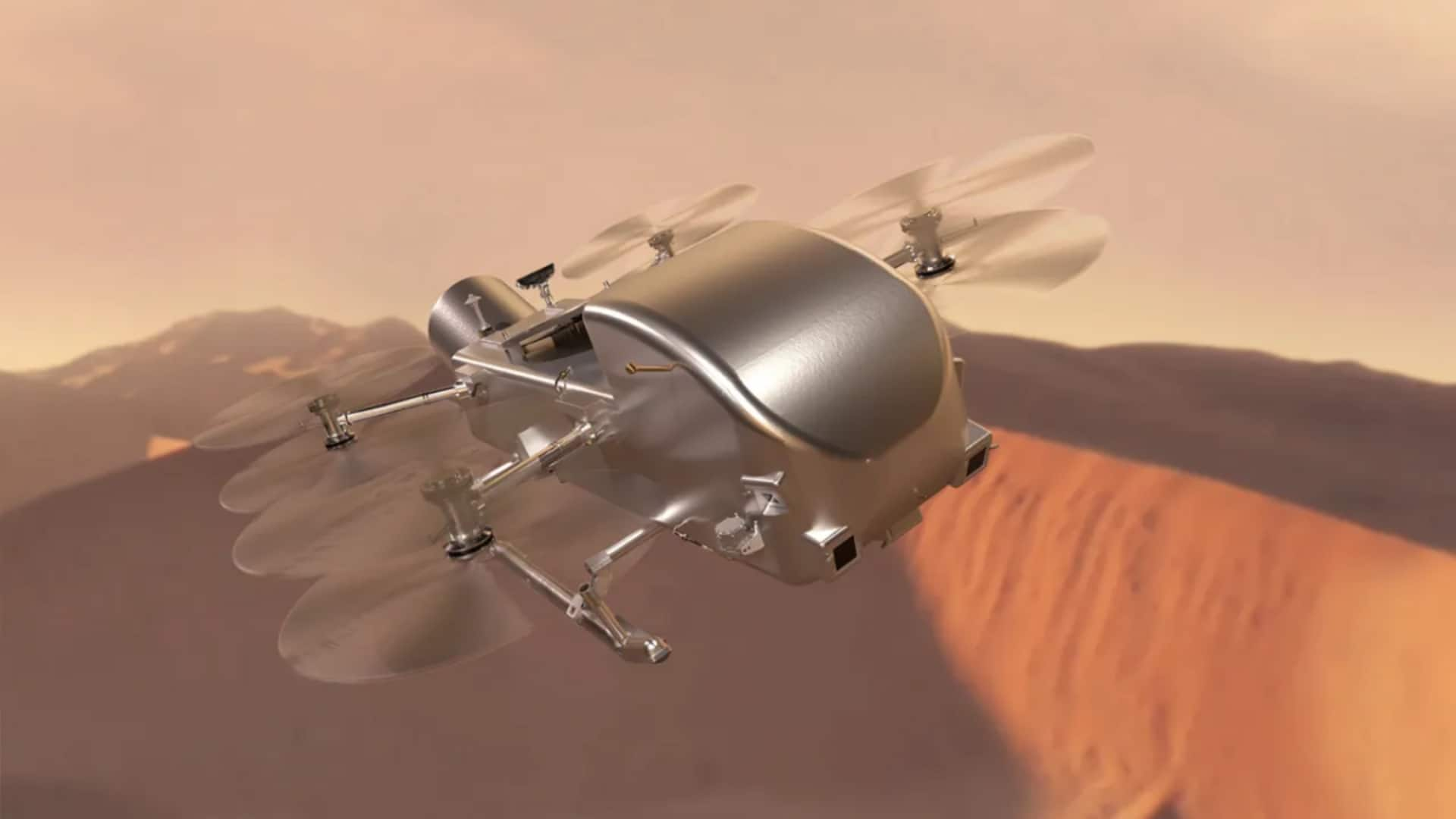
NASA's Dragonfly mission to Saturn's moon Titan gets green light
What's the story
NASA has received approval to send a drone-like explorer, named Dragonfly, to Titan, Saturn's largest moon. The space agency announced that it can now finalize the design for the rotorcraft, which is as large as a Mars rover. The ambitious mission is set for a July 2028 launch, with the aim of identifying prebiotic chemical processes common on both Titan and early Earth before life evolved.
Arrival plan
Dragonfly's journey to Titan scheduled for 2034
The eight-rotor drone is expected to reach Titan in 2034. Its mission will be to explore various "promising locations" on the moon, assessing the potential for life in its environment and searching for signs of past life. The dense atmosphere of Titan, four times thicker than Earth's, will assist the rotorcraft in "hopping" up to 8km every full Titan day, equivalent to 16 Earth days.
Mission milestone
Dragonfly set to break NASA's rover distance record
Dragonfly is projected to traverse over 174km during its 32-month mission, outdistancing the combined mileage of all NASA's Mars and Moon rovers. The total cost for the rotorcraft's lifecycle is estimated by NASA at $3.35 billion, nearly double the initial projected cost when the project was first announced in 2019. This marks a significant milestone in space exploration missions.
Mission impact
NASA excited about the boundaries Dragonfly will push
Nicky Fox, Associate Administrator of the Science Mission Directorate at NASA, expressed enthusiasm about the Dragonfly mission. She stated, "Dragonfly is a spectacular science mission with broad community interest, and we are excited to take the next steps on this mission." Fox also highlighted that exploring Titan will push the boundaries of what can be achieved with rotorcraft outside of Earth.